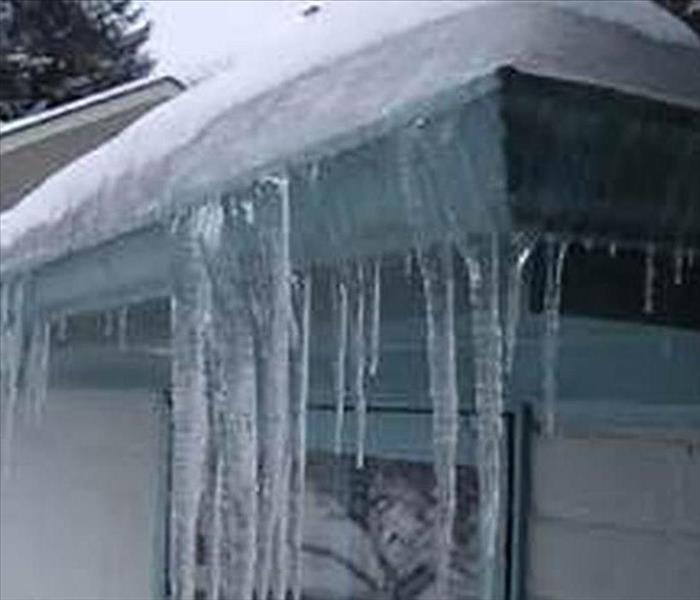Ice Damming on Homes
1/7/2018 (Permalink)
Ice dams occur on heated buildings with sloping roofs in cold climates with deep snow accumulation. Ice dams on roofs form when accumulated snow forms an insulating layer under cold conditions that would cause the freezing point to be within the snow layer, if it were not subject to melting. Instead, building heat coming through the roof's surface melts the snow resting on it. This causes meltwater to flow down the roof, until it reaches below a place on the roof's surface that is below freezing—typically at the eaves where there is no building heat. When the meltwater reaches the frozen surface, ice accumulates, growing a barrier that impedes further passage of meltwater off the roof. Ice dams may result in leaks through the roofing material, possibly resulting in damaged ceilings, walls, roof structure and insulation, damage or injury when the ice dam falls off or from attempts to remove ice dams.
The melting of roof snow comes from the combination of three basic causes:
- Air temperatures well below freezing.
- A thick layer of dry snow, which has good insulating capabilities.
- Heat from the building coming through the roof.






 24/7 Emergency Service
24/7 Emergency Service
